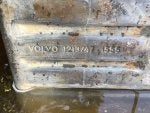Recently acquired '72 142E with B20F and D-Jet system still installed. Searching for a replacement fuel tank as current one may not be salvageable. Question: is this fuel tank unique to the '72 model year? Or can tanks from other 142E years be used? For example, I understand that the suction tube on on a '72 is 7/16" but the suction tube on the '71 142E is 5/16". Does the "71 tank otherwise fit into the '72? Are there performance penalties if using a smaller suction tube??
Would also be interested in getting a new replacement tank but so far they seem to be made of "unobtainium".
TIA for any insights to be offered!
Would also be interested in getting a new replacement tank but so far they seem to be made of "unobtainium".
TIA for any insights to be offered!







